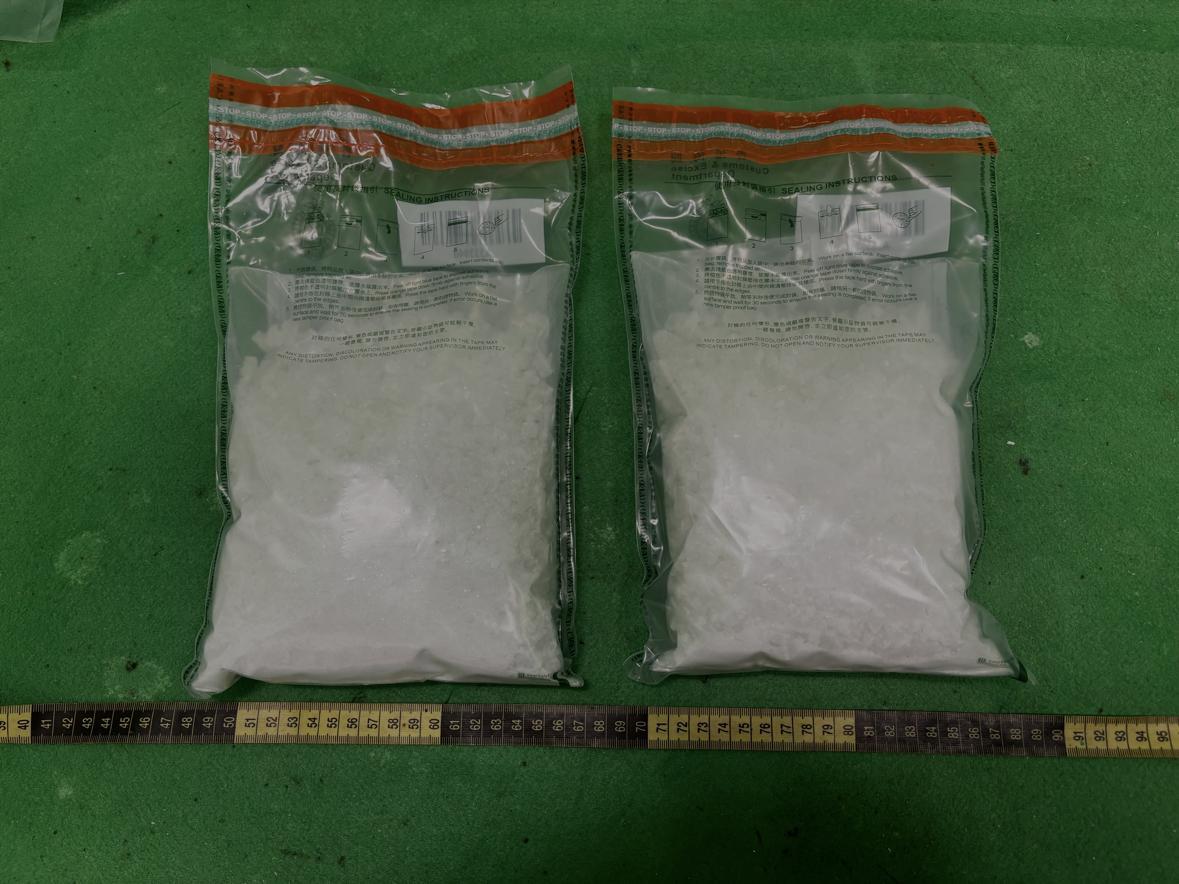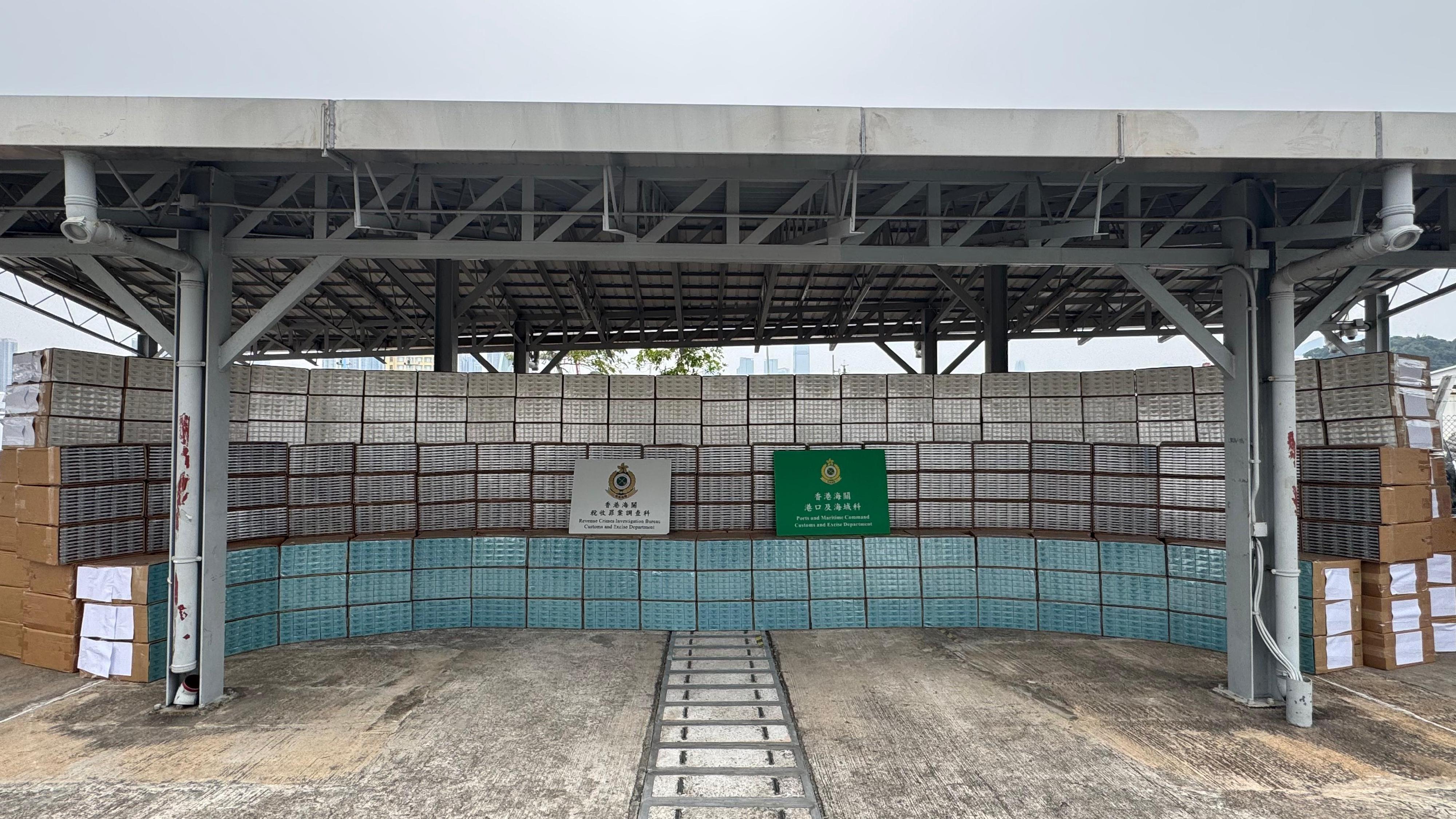​On New Year’s Eve yesterday (December 31), the Immigration Department recorded a total of around 156 000 visitors arriving Hong Kong through various sea, land and air control points. Among them, Mainland visitors accounted for about 120 000, representing 77 per cent of the total arrivals.
During the period from midnight to 6.30am today (January 1), around 25 000 Mainland visitors departed Hong Kong via land boundary control points. Among these Mainland visitors, 6 784, 8 946 and 7 722 of them departed through Shenzhen Bay Control Point, Lok Ma Chau Control Point and Lo Wu Control Point respectively.
New Year countdown fireworks display
Regarding large-scale events, the countdown fireworks display held on New Year’s Eve at Victoria Harbour attracting over 400 000 spectators. The event was well-received by local residents and visitors, and relevant special traffic arrangements and crowd control measures were implemented smoothly. A variety of celebratory events also took place across Hong Kong during the New Year period, creating a vibrant festive atmosphere for both visitors and residents.
Situation of cross-boundary traffic and Hong Kong Port after fireworks display
In view of the New Year’s Eve countdown fireworks display, the Hong Kong Special Administrative Region Government and relevant departments of Guangdong Province and Shenzhen Municipality implemented two special boundary-crossing arrangements, including extending the passenger clearance service at the Lo Wu Control Point to 2am on New Year’s Day, as well as extending the passenger and passenger vehicle clearance services at the Shenzhen Bay Control Point to operating overnight, in order to facilitate the passenger flow between Hong Kong and the Mainland for citizens and visitors to enjoy the festive season.
With the extension of operating hours at certain boundary control points, the relevant departments have deployed additional manpower and operated all clearance counters and channels during the peak periods of cross-boundary travel to divert passenger and vehicular flow. The overall operation of the control points and traffic were smooth and in order.
After the New Year’s Eve countdown fireworks display has concluded, the Emergency Transport Co-ordination Centre of the Transport Department (TD) steered public transport operators to enhance their service capacity. The TD also deployed staff to the public transport interchanges and cross-boundary coach termini concerned for on-site monitoring and co-ordination, with a view to enabling cross-boundary travellers to depart Hong Kong effectively and in an orderly manner.
Among them, the service frequency of MTR East Rail Line trains to Lo Wu during the period from 12 midnight on New Year’s Day to the last departure at 12.56am was increased up to about three to four minutes. A total of 14 trains departing from Admiralty were operated to enable travellers to cross the boundary using the Lo Wu Control Point. Thereafter, KMB operated the special route no. N73 connecting MTR Sheung Shui Station and the Lok Ma Chau (San Tin) Public Transport Interchange, which was run at a service headway of five minutes during the period from about 1.30am to 3am. Three buses were arranged for picking up passengers concurrently during the service peak with the headway reduced to two minutes for more effective dispersal. Travellers then transferred to the overnight Lok Ma Chau-Huanggang cross-boundary shuttle bus (Yellow Bus) for returning to Shenzhen via the Lok Ma Chau/Huanggang Port.
In addition, the services of short-haul cross-boundary coaches and special overnight bus routes connecting to boundary control points were also strengthened. Standby vehicles and manpower were deployed to enhance service frequency as necessary. An additional pick-up point was designated for the cross-boundary coach at the coach pick-up and drop-off area at Wui Man Road outside Hong Kong West Kowloon Station in the small hours. Cross-boundary private cars were also diverted to use designated ports during early-morning hours. All of the above measures were generally implemented smoothly, which were conducive to the effective diversion of the cross-boundary people flow.
Major tourist spots / inbound tour groups
A large number of visitors went to various major tourist attractions in Hong Kong during the New Year’s Eve and New Year holidays, including Hong Kong Disneyland, Ocean Park, Ngong Ping 360, the Peak Tram and the West Kowloon Cultural District, etc. All major tourist spots were operating with high patronage and in good order.
Regarding tour groups, according to the Travel Industry Authority’s information, around 220 Mainland inbound tour groups visited Hong Kong during the New Year’s Eve and New Year holidays, involving around 7 200 visitors, with around 72 per cent engaged in overnight itineraries, and they were generally in good order.
The Chief Secretary for Administration, Mr Chan Kwok-ki, who leads the interdepartmental working group on festival arrangements, said, “I would like to thank members of the public and travellers for their co-operation. I would also like to express my gratitude to all relevant Government departments, organisations and sectors for their close collaboration and full commitment in making comprehensive preparation and actual handling for receiving visitors during the New Year’s Eve and New Year holidays, allowing citizens and tourists to joyfully celebrate the festive season together and usher in the New Year.” read more







